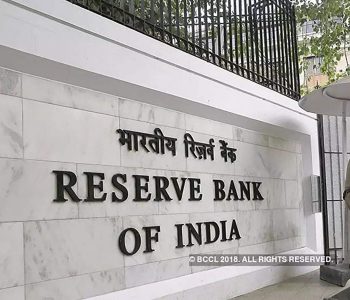The ongoing liquidity crisis in Nepal

KATHMANDU: The hope of a post-pandemic economic recovery in Nepal has been met with a roadblock of liquidity crunch within the Banks and Financial Institutions (BFIs). Liquidity crunch is a common occurrence in Nepal due to the Nepalese Rupee (NPR) being a non-convertible currency and a heavy trade deficit.
The current liquidity crisis has emerged in the wake of increased credit disbursements to encourage economic activity in the country and foster economic recovery. An increase in credit disbursement has not been met with a comparable increase in deposits. BFIs have run out of loanable funds and the decision to raise internal loans by the government for development activities is pending. A lack of deposits within BFIs is expected during the festival season, lasting from mid-October to mid-December. The period between mid-July and mid-January is generally associated with a lack of liquidity in the market, as direct and indirect taxation on individuals and corporations is due to the government during this period. Apart from the expected minimal liquidity crunch in the market, a number of factors are contributing to the current liquidity crisis, some of which are explored in this article.
Factors contributing to the liquidity crisis
Increased credit
To revive the economy after a prolonged lockdown enacted to contain the pandemic, the new monetary policy for the fiscal year 2021/22 increased the Credit-Deposit (CD) Ratio to be maintained by Banks and Financial Institutions (BFIs) to 90% from a Credit-to-core-capital plus deposit (CCD) ratio of 85%. This led to BFIs lending to both individuals and corporations. The monetary policy also mandated BFIs to limit their CD ratio to 90% until mid-July 2021, but not even 6 months into the current fiscal year, the CD ratio as per NRB indicators as of December 31, 2021, stands at 90.76%.
According to the current macroeconomic and financial situation report published by NRB, the outstanding credits of BFIs increased by 8.9% in the first 4 months of the current fiscal year, compared to only a 5.1% increase in the first 4 months of the previous fiscal year. Term loans made up 22% of the total outstanding loan, with demand and other working capital loans made up 20% of the total outstanding loan. The outstanding credit amount has increased by 32% between November 2020 and November 2021, significantly exceeding the target of 19% set by the government.
Low deposits
The monetary policy for the fiscal year 2021/22 extended loan repayment and interest payment deadlines by one year to mid-January 2023 for sectors that are hard hit by COVID-19 such as restaurants, party palaces, public transport, educational institutions, and entertainment companies. This extension of loan repayment and interest payment deadlines could have resulted in slow growth in deposits in the current fiscal year.
Nepal Rastra Bank reports that deposits rose by 1.3% during the first 4 months of the current fiscal year 2021/22. Deposits had risen by 4.7% in the first 4 months of the previous fiscal year. The provisional deposits in November 2021 totaled NPR 4.8 trillion, with individual depositors making up 60% of the total deposits followed by non-BFIs making up 20% of the total deposits. The deposits have increased by 17% from November 2020 to November 2021.
Declining foreign reserves
According to the NRB’s report, the foreign reserves of Nepal Rastra Bank have declined by 17% in November 2021 compared to November 2020. There is a decline of 11% in foreign reserves of Nepal Rastra Bank in the first four months of the fiscal year 2021/22.
In the first four months of the current fiscal year, the total import increased by NPR 247.8 billion and the export increased by NPR 41.9 billion compared to the same period of the previous fiscal year. With rising global petroleum prices and an increase in economic activity after the pandemic, the import of petroleum has increased by 118.6% in the first four months of the current fiscal year. Similarly, imports of crude soyabean oil and crude palm oil have increased by 146.8% and 1051.3% respectively in the first 4 months of the current fiscal year. Crude soyabean oil and crude palm oil, Nepal’s top 10 imports, are processed into soyabean oil and palm oil which are Nepal’s top two exports. This brings into light one of the major issues related to the declining foreign reserves of Nepal; the foreign currency earned through major export is spent on major imports, with little value addition in between.
On the other hand, the number of workers going abroad for employment has increased by 249.1% in the first four months of the current fiscal year when compared to the same period in the previous fiscal year. On the other hand, Nepal’s remittance inflow declined by 7.8% during the first four months of the current fiscal year in comparison to the same period in the previous fiscal year. In nominal terms, this decline represents USD 222 million (NPR 26.38 billion[1]). The decrease in money inflow from remittance is especially concerning during the festival period from mid-September to mid-October, the key consumption period in Nepal, which could further contribute to the declining economic growth. Nepal recorded an all-time high remittance worth NPR 961 billion in the fiscal year 2020/21 which was possibly attributed to increased use of formal channels due to restrictions in movements. With relaxation of lockdowns or lifting of restrictions in many parts of the world, the flow of remittance could have reverted into informal means of money transfer like Hundi.
Mitigating actions adopted by the government
To ease the liquidity crisis, Governor Maha Prasad Adhikari announced that the Nepal Rastra Bank has floated NPR 2500 billion through permanent liquidity facility, NPR 220 billion through repurchase agreement (repo)[2], NPR 69 billion through overnight repo[3], and NPR 27 billion through direct purchase. Central banks repurchase securities from commercial banks at a discounted rate known as the repo rate, which allows them to control the money supply in the economy. The central bank has also approved a refinancing facility of NPR 92 billion. The central bank has injected NPR 1.7 trillion in the first four months of the current fiscal year. To reduce the CD ratio of BFIs, they have been allowed to include 80% of the funds belonging to local governments as deposits.
NRB has also required importers to deposit 100% cash in banks to open letter of credit for imports of luxury goods even though import loans only made up 5% of the total outstanding loan as of November 2021. Previously, importers had to maintain up to 15% cash margin for these selected goods while opening the Letter of Credit. A possible reason for this could be that a working capital loan which makes up 20% of the total outstanding credit could be used by importing businesses to open letter of credit which further increases import.
The Department of Immigration has reduced the minimum required foreign currency for Nepalis travelling abroad to USD 500 (NPR 59.5 thousand) from USD 1000 (NPR 118 thousand). The department has also stated that immigration clearance will only be granted if the foreign currency has been purchased from commercial banks after providing proof of income.
The government has also stopped issuing licenses to importers of betel nuts, peas, peppercorn, and dried dates and plans to impose a quota on the import of such goods.
A limit has also been imposed on the gold jewelry that a traveler can bring into the country where custom duty is levies on gold jewelry weighing 50g to 200g, and any gold over 200g being seized.
While the steps taken by the government will slow down the declining foreign exchange reserves and add some liquidity into the market, a systemic change is required in Nepal to avoid the liquidity crunch from being an issue of concern every few years. The root cause of Nepal’s liquidity crunch, which is an excessive dependence on imports and remittances, needs to be addressed. Sustainable macro-economic policies along with fostering private sector growth in exporting industries are necessary to prevent another liquidity crunch in the market.
The article has been extracted from the website of Nepal Economic Forum














Facebook Comment